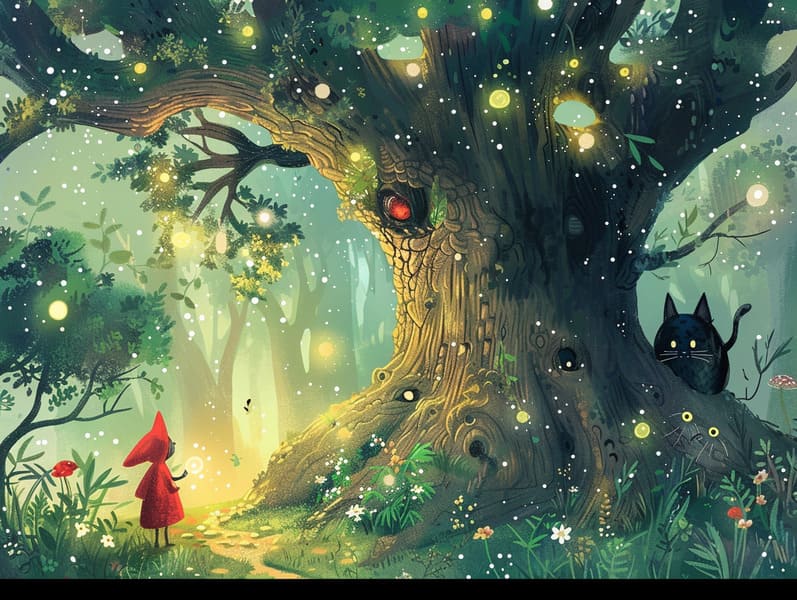The Rise of Fairy Tales for Kids and the Unceasing Captivation.
The Rise of Fairy Tales for Kids and the Unceasing Captivation.
Blog Article

Timeless fairy tales have deep roots. These tales have been spoken from one generation to the next ages before they were ever written down. They came from a variety of cultures, including Middle Eastern traditions. They were initially passed along among adults, often carrying themes and messages relevant to the societal norms and beliefs of the time.
The Brothers Grimm, the two Grimm brothers, were among the first to compile many of these beloved stories. Their volume, "Grimm's Story Collection," included classics like "Cinder Maid," "The Bread Crumb Trail," and "Schneewittchen," which have since become essentials in the world of children's fairy tales. Similarly, H. C. Andersen's fanciful narratives, such as "The Story of the Little Mermaid," and "The Duckling that Could," have enchanted hearts worldwide, securing their place in the pantheon of timeless fairy tales.
Even though they are old, traditional fairy tales remain as relevant as ever, especially as children's night stories. These whimsical stories are now available in different formats, including artistically illustrated books, delightful animations, and digital fairy tales.
Their lasting presence can be connected to several magical reasons:
Important Morals: Timeless fairy tales often teach important moral lessons. Fairy tales like "The Story of the Boy Who Cried Wolf" teach the benefit of truthfulness, while "The Race of the Tortoise and the Hare" show the virtues of persistence and unpretentiousness. These stories offer little ones clear distinctions between virtue and vice, developing their moral compass in a kind yet lasting way.
Empathy and Awareness: Fairy tales frequently include protagonists facing obstacles and hardships, urging audiences to identify with their struggles and encourage their triumphs. For instance, "Beauty and Her Beast" shows us the necessity of seeing beyond looks to realize the true being of a character, nurturing understanding and recognition.
Cultural Perception: Many ancient fairy tales are infused with the cultural contexts from which they came. Understanding these fairy tales can provide fascinating glimpses into different customs, enhancing a sense of world awareness and awareness.
Imagination and Innovation: The imaginative elements in fairy tales—magic wands—stimulate children’s visions and dreams. These fairy tales carry readers to magical realms, kindling fantasy ideas and a sense of mystery that stays a lifetime.
Classic fairy tales are not only captivating but also didactic. They serve as mesmerizing tools in enhancing various mental and emotional abilities in little ones. When timeless fairy tales are read aloud, they advance language acquisition by introducing new vocabulary and intricate sentence structures. This practice also strengthens hearing abilities and mental focus, as kids concentrate deeply, prepared to see what happens next.
Furthermore, reflecting on the themes and characters of timeless fairy tales can improve thinking skills and logical thinking. Young ones are guided to discern patterns, predict happenings, and know cause and effect. These explorations also further kids convey their thoughts and feelings, promoting their emotional intelligence.
In today’s digital era, the proliferation of digital fairy tales has made these narratives more reachable than ever. Online platforms and programs offer ample collections of classic fairy tales that can be perused or heard anytime, anywhere. Fairy tales recited are particularly popular, offering an captivating way for little ones to appreciate these spellbinding stories. Read-aloud stories and read-to-me stories guide characters and settings to life, often complemented by magical melodies and songs that enhance the narrative journey.
The unending appeal of traditional fairy tales lies in their ability to modify to modern society while sustaining their central values. Contemporary renditions of these stories often feature more representative protagonists and modern settings, making them pertinent to today’s audience. However, the fundamental themes of spirit, sympathy, and equity remain unchanged, continuing to influence readers of all ages.
Ancient fairy tales also offer a sense of warmth and familiarity. They render a systematic narrative with a plain beginning, middle, and end, often drawing to a close more info with the culmination of conflicts and the triumph of good over bad. This consistency can be solacing for children, rendering a sense of invariability in an dynamic world.
Traditional fairy tales continue to bewitch and educate new generations, maintaining their appeal and significance in modern society. As children's bedtime stories, they showcase a perfect blend of captivation and insight, nurturing moral values, empathy, and creativity. The existence of internet fairy tales and the commonness of fairy tales recited warrant that these ancient tales remain attainable to new generations.
By keeping and telling these tales, we continue to exalt the rich tapestry of creativity and cultural heritage. Whether you are delving into a richly illustrated book, experiencing a virtual library, or listening to an spoken story, the spell of popular fairy tales is always within reach. These stories teach us of the unending spell of storytelling and its ability to gather us across eras and regions.
If you are experiencing a beautifully illustrated book, experiencing a electronic collection, or hearing an narrated book, the enchantment of traditional fairy tales is always within reach.
These tales show us of the eternal presence of storytelling and its ability to link us across generations and cultures, casting a charm that delights and instructs alike.